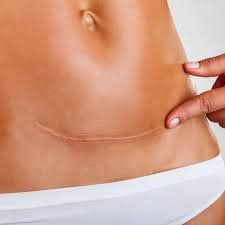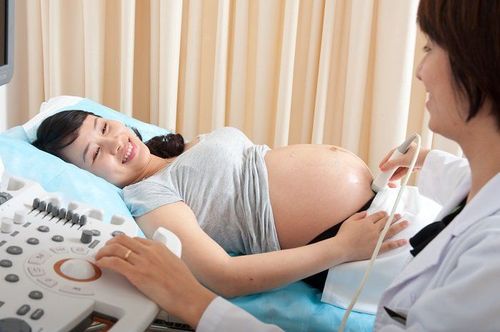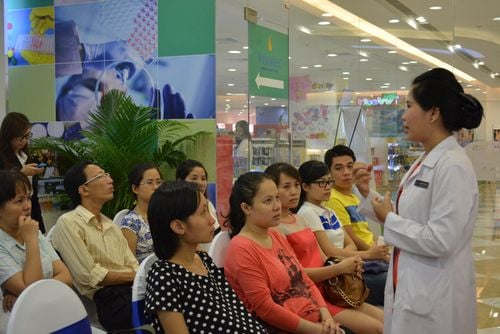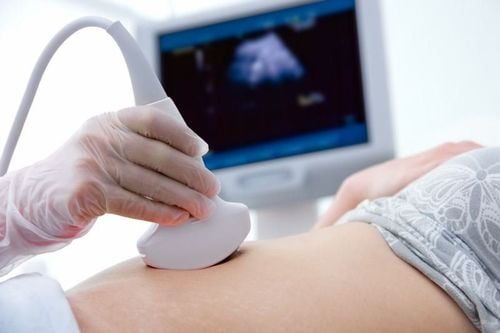This is an automatically translated article.
There are many mothers wondering, how long after cesarean delivery can they get pregnant again and what to pay attention to during such a pregnancy to have a healthy pregnancy.The article is professionally consulted by doctors of Obstetrics Department, Vinmec Ha Long International General Hospital.
Vinmec received a question from a mother raising a young child with the following content:
Question: “Dear doctor, I am 26 years old this year. My family just had a baby 8 months old, I gave birth by caesarean section. We are planning to have a second baby soon because my husband is also 40 years old this year. So how soon after giving birth to my first baby can I get pregnant again to be safe and good for both mother and baby? Thank you doctor."
(Ms. Hoang Minh Thao, Ha Long City)
Doctor replied: After giving birth by cesarean section, you should wait 2 years after the first cesarean section before you should get pregnant again. There are many reasons why you need to keep the minimum distance between 2 births.
This is a reasonable time for the uterine incision in the first caesarean to fully heal and the mother's health is also guaranteed in the next pregnancy. If this period is not guaranteed, the mother and fetus will face many dangerous risks, even affecting their lives.
1. Risks for pregnant women with multiple cesarean deliveries
Risk of exacerbation of old cesarean scar
Old cesarean scar podium is an obstetric complication, common in pregnant women who have had cesarean section. In fact, the old cesarean scar above the uterus will continue to strengthen, thicken, and may cause rupture of the incision during natural labor. Scarring of the old uterus during pregnancy often occurs during labor, especially when there is a strong contraction or during delivery, so it is often necessary to give birth by procedure when eligible. A sign to recognize this condition is that the patient will feel a sharp pain in the uterine area, often at the old incision site, which is life-threatening for both mother and baby. Therefore, pregnant mothers need to pay attention to daily monitoring.

According to a study with nearly 200,000 women in the US, if the gap is less than 1 year, the risk of breaking the old incision is very large because the scar has not healed well. In the case of placenta previa, low frontal placenta in patients with old cesarean section scars, often multiple caesarean sections, the risk of placenta accreta is very high. In these cases, a caesarean section is required. The risk of very heavy bleeding requires a total hysterectomy, a lot of blood transfusion. Sometimes it also causes damage to nearby organs such as the bladder, intestines, ureters....and even life.
Risk of pregnancy sticking to the old cesarean scar
This is considered an ectopic pregnancy and is very dangerous and rare. There are two types of fetuses attached to the old incision.
Type 1: The fetus implants in the old incision and grows right on the incision, in the early stage causes heavy bleeding and has to be aborted. Sometimes the fetus continues to develop the placenta can cause low placenta or comb placenta due to the placental spines interwoven with the uterine muscle.
Type 2: The placenta is implanted deep into the muscle and fibrous tissue layer of the uterus at the old incision. At that time, the placental spines will penetrate deeply into the uterine muscle, causing the condition of the comb teeth, even penetrating the uterus to invade the pelvic cavity, causing intense bleeding leading to death.
Risk to the baby
Due to placenta previa, there are risks: Preterm pregnancy, poor growth, anemia, high neonatal mortality rate.
Trắc nghiệm: Đau lưng sau sinh mổ và những điều cần biết
Sau sinh mổ, bà mẹ không chỉ đau đớn với vết khâu bụng dưới mà còn đối mặt với những cơn đau lưng. Mức độ đau lưng sau sinh mổ theo thống kê chiếm đến hơn 70% các trường hợp. Trả lời nhanh 5 câu hỏi trắc nghiệm sau sẽ giúp bạn có thêm kiến thức để hạn chế tình trạng này.The following content is prepared under supervision of Thạc sĩ, Bác sĩ y khoa, Tạ Quốc Bản , Sản phụ khoa , Khoa Sản phụ khoa - Bệnh viện Đa khoa Quốc tế Vinmec Phú Quốc
2. For a safe second pregnancy after cesarean section, mothers need to pay attention
As soon as pregnancy is suspected, it is necessary to go to the hospital or specialized medical facilities for examination, ultrasound, and fetal health diagnosis. Check the old incision to see if it is safe for the next pregnancy or not. The doctor should be informed of the reason for the first cesarean section, the time, the complications after the first cesarean section and the medical history related to the surgery. During pregnancy, the mother needs to monitor whether the old incision causes pain? If you see any abnormal signs in the uterus, especially at the old incision site, such as sharp pain, constant pain on the pubic bone, it is necessary to notify the doctor immediately. Periodic antenatal check-ups help detect early signs of threats to the fetus and mother's health, thereby promptly avoiding possible adverse events. You should go to the hospital about 10 days before your due date for the best examination and advice. One more thing that mothers should also note is that in the case of re-operation next time, in addition to the risks of surgery in general such as complications of anesthesia, anesthesia, risk of bleeding, risk of infection, there are other risks. damage to the abdominal organs, especially the bladder.

If there is a need for consultation and examination at the Hospitals of the National Health System, please book an appointment on the website to be served.
Please dial HOTLINE for more information or register for an appointment HERE. Download MyVinmec app to make appointments faster and to manage your bookings easily.














